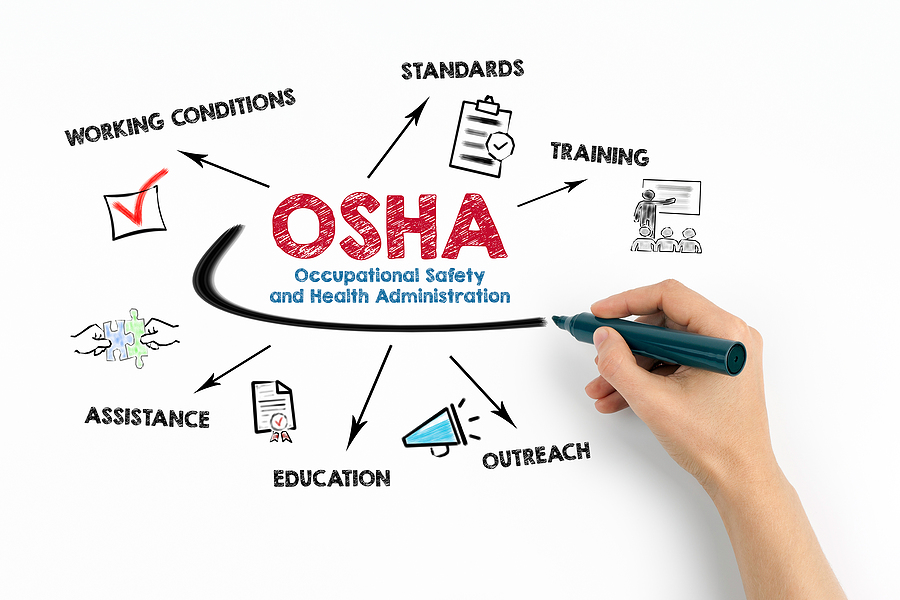Warehouse Safety Training and OSHA Guidelines for Warehouses

Your warehouse safety strategy is more critical now than ever. In this article, a well-detailed explanation of why this is the case will be given and explain some OSHA warehouse safety guidelines.
In our packed stock rooms, there are specific hazards around every corner. In warehouse facilities, businesses are struggling to adopt safety best practices. We must be constructive and strategic in our approach. Right now, it is time to prioritize warehouse health and safety practices.
The Benefit of Warehouse Security
Warehouse deaths increased between the year 2015 and year 2017, as stated by the Bureau of Labor Statistics. According to a new work injury rate calculation, 5 out of every 100 full-time warehouse staff get hurt on the job each year. There has also been an ever-increasing level of online shopping, necessitating large-scale national warehousing.
More jobs for local warehouses come with e-commerce. All the work entails occupations that are fast paced, physically demanding, and sometimes stressful. Warehouse employees are feeling the change with these kinds of jobs and that kind of rate. All the advancements in robotics are putting workers in even more interaction with computers.
As we continue to keep up with innovation and demands in this new century, the chance of injury will increase. At Safety Counselling, we are paying close attention to warehouse safety in general and how we can improve the training we offer.
What Role Does OSHA Play in Warehouse Safety?
OSHA’s role in warehouse safety is a frequently asked topic. OSHA takes it up as its job to protect worker health and safety on the job. OSHA keeps employers responsible for their actions. For this to happen, it means that we pay attention and take precautions to protect our staff. We love and support our workers by preventing them from any form of hazards when we follow OSHA warehouse safety laws. OSHA creates services to assist businesses in identifying flaws. They warn all building owners concerning common dangers, accidents, and fatalities, among other things. Companies become better, healthier, and more prosperous because of this action. Employers achieve improvement of Workplace safety by processes such as conducting a Job Safety Analysis and promoting safety training.
Warehouse Safety Guidelines from OSHA
The OSHA Guidebook to Warehousing will provide you with a more in-depth insight into their warehouse safety regulations. They go over the following OSHA warehouse rules:
1. Conveyors
2. Pallet forklifts
3. Hazard contact
4. Inadequate ergonomics
5. Storage of materials
6. Docks.
7. Charging stations
8. Handling and lifting by hand
9. There are other dangers as well.
Typical Warehouse Safety Risks
It is a fact that working in a warehouse is hazardous, particularly, our current warehouses. We will be looking at some of the most popular warehouse health and safety risks below. We will also give you some pointers, practice guidelines, and training strategies.
1. Ergonomics & Lifting
The lifting and transporting of warehouse commodities must be monitored and managed. As workers perform routine activities, examine the workplace environment and their posture. Workers may require lifting equipment, transportation equipment, poles and, supports. Stretching your employees will also help them stay involved. It may also help them lift properly and reduce injuries.
2. Docks for loading and unloading
A loading dock accounts for about a fifth of all warehouse injuries. The unsafe setup of waterfront docks and machinery puts workers in grave danger.
3. Forklifts
Albuquerque forklift training is a form of highly needed training for the employees’ health and safety. OSHA also requires it to boot. In your warehouse, prevent OSHA breaches, fines, deaths, and fatalities. Hands-on and refresher training might be what your employees need.
4. Communication with Hazardous Materials
It is convenient to overlook this, but it is not safe for everyone. MSDS guides are an essential part of the overall safety and health strategy. They will almost certainly be part of a warehouse safety inspection. You must keep SDS up to date and replace them as required.
5. Storage of materials
In busy warehouses, carefully storing materials is essential. Failure to comply will result in fines as well as casualties like injuries and even death. It is also necessary to look at the guidelines for storing flammable liquids. However, whatever products you use, remember how to store, and transport them safely.
In Conclusion
A warehouse safety checklist from OSHA will help keep everyone on task safe. The best part of a safety checklist is that everyone is on the same track and keeping an eye out for one another. The use of checklist gets ingrained in the routine. It is embedded, and the workers are aware of possible dangers until they become a problem.
